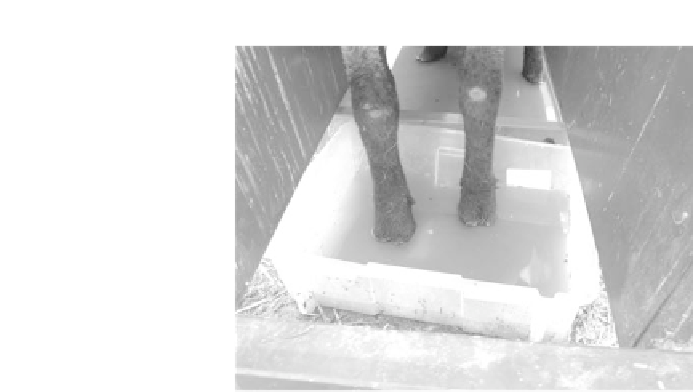Agriculture Reference
In-Depth Information
Figure
10.25.
Sheep in foot dip to prevent foot rot.
was contaminated, a 60 percent reduction.
11
Nationwide, salmonella poisoning
cases had also declined by 50 percent in the same period, possibly due to lower
contamination in eggs.
10.17
CREDIT
Few people think of credit as a raw material of agriculture. For Octavio in Ecuador a
loan would be a risk he is unwilling to take. He would have to promise his land as
collateral. If anything happened to the crop or animals, he could lose everything.
For Donio in the Philippines, credit from a bank is impossible since he has no collat-
eral. He has a form of credit from the landowners whose fields he farms. They give
him use of their land until harvest when he is expected to pay with part of the
harvest. Steve in the United States must use credit. All of his raw materials such as
fertilizer and seed are purchased. Over 77 percent of the cost of a crop is incurred
before planting and shortly thereafter.
12
There is no return on this investment for 3
to 4 months.
Without credit, modern commercial agriculture would be very difficult. Few
farmers keep enough cash on hand to pay for their investment in a crop or animal enter-
prise. In fact, it is often more profitable to borrow money and pay interest in order to
gain the high rate of return on a profitable farm operation.
10.18
LAW OF DIMINISHING RETURNS
One of the problems with inputs faced by every farmer is how much to use. If 10 kg of
fertilizer gives an extra 200 kg of maize, then won't 20 kg of fertilizer give an extra
400 kg of grain?








